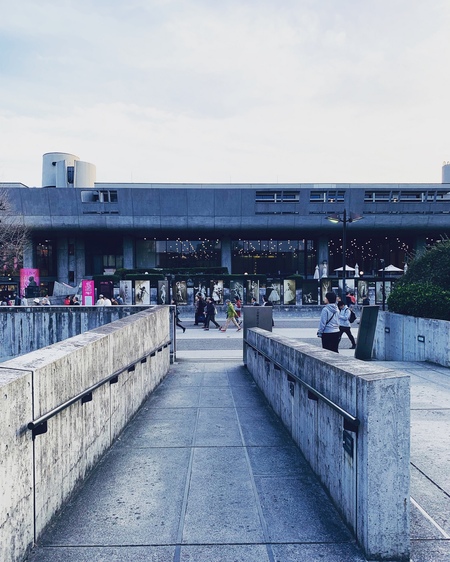スロープの出現
動線空間が建築の中で主体的に扱われるようになったのが20世紀以降、とした。
なかでもスロープは20世紀のモータリゼーションとともに主体的に扱われるようになったのではないか。
例えば、イタリアのトリノにあったフィアットのリンゴット自動車工場は、今は改修されショッピングモールやホテル、劇場からなる複合施設になっているが、自動車の生産ラインが螺旋状のスロープを上っており、5階建ての最上階で自動車が組み上がり、そのスロープの続きで屋上に楕円形のテストコースが設けられていた。
最初は自動車の昇降のために設けられていたスロープが、人間の昇降にも使われるようになったのだろう。
スロープは階段と違って連続的にレベルが変化していく、階段だと多少の上下動を伴ってレベルが変化していく。これは視線が階段よりスロープの方がよりスムーズに変化していくことであり、20世紀は今と違ってネットなど無い時代なので、建築を伝えるためには写真しかなく、その写真を出版物で見せるしかなく、たった1枚の写真にその建築で伝えたいこと全てを盛り込もうとした時に、どう見えるか、視線の動きが正確に計算できる方が良かったから、スロープが動線空間として主体的に扱われるようになったのではないだろうか。
"Emergence of slopes"
It is assumed that the movement line space has been dealt with predominantly in architecture since the 20th century.
Above all, slopes have come to be treated independently with motorization in the 20th century.
For example, Fiat's Lingotto Car Factory, located in Turin, Italy, is now refurbished into a complex consisting of shopping malls, hotels and theaters, but the car production line is on a spiral slope, A car was assembled on the top floor of 5 floors, and an oval test course was provided on the roof on the continuation of the slope.
The slope, which was originally provided for the lifting and lowering of the car, would have been used for lifting and lowering of humans.
Unlike the stairs, the slope changes level continuously, and in the case of the stairs the level changes with some vertical movement. This is that the line of sight changes more smoothly in the slope than in the stairs, and since the twentieth century is an age when there is no net etc. unlike now, there is only a picture to convey architecture, and that picture is a publication Because it was better to be able to accurately calculate the movement of the line of sight when trying to incorporate everything that you want to convey in that single building with only one picture to show, the slope is the dominant flow line space Isn't it coming to be treated?


コメント